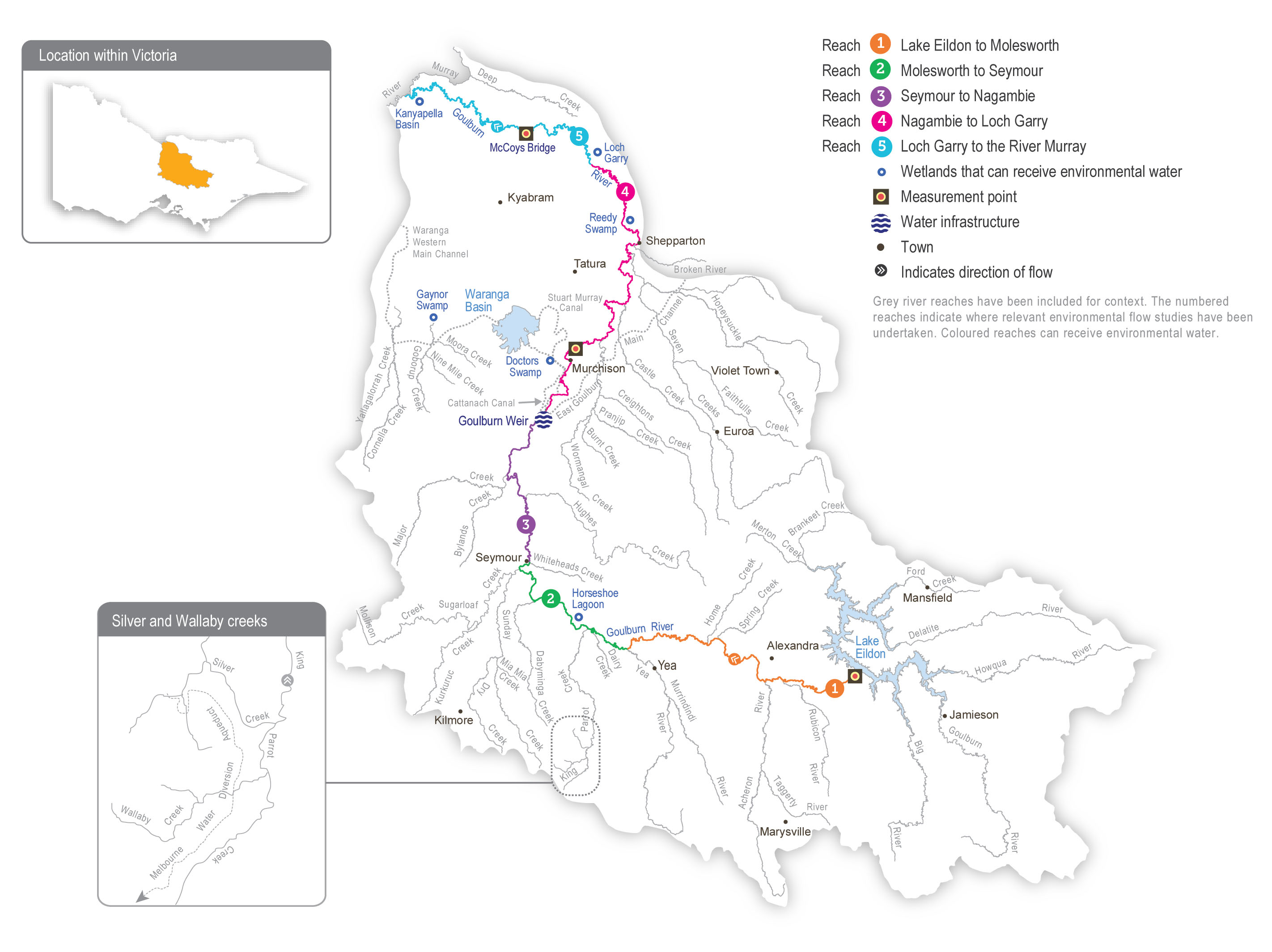There are several environmental water holders in the Goulburn system. The Commonwealth Environmental Water Holder (CEWH) holds the largest volume, and the use of Commonwealth Water Holdings is essential for achieving outcomes in the Goulburn River and priority environmental sites further downstream. Water for the environment held on behalf of the Living Murray program may assist in meeting objectives in the Goulburn system en route to icon sites in the Murray system (see subsection 4.4.2). Water held by the VEWH in the Goulburn system is primarily used to meet environmental objectives in the Goulburn River and the Goulburn wetlands, but it can also be used to support ecological objectives at downstream sites along the Murray River and in South Australia.
The construction and operation of Lake Eildon and Goulburn Weir have significantly altered the natural flow regime of the Goulburn River. Water harvesting during wet periods, and releases to meet irrigation and other consumptive demands during dry periods, mean that flow below these structures is typically low in winter/spring and high in summer/autumn. This is the reverse of the natural seasonal flow pattern. Land use changes and the construction of small dams and drainage schemes have further modified the Goulburn River’s flow regime. Levees and other structures prevent water from inundating the floodplain and filling many of the natural wetlands and billabongs. Several tributaries, including the Acheron, Yea and Broken rivers, join the Goulburn River downstream of Lake Eildon and can add some flow variation on top of the river’s regulated flow. Large floods that cause the Goulburn River’s storages to fill and spill are also important for the overall flow regime and its associated environmental values.
The priority environmental flow reaches in the Goulburn River are downstream of Goulburn Weir (reaches 4 and 5), which are collectively referred to as the lower Goulburn River. The mid-Goulburn River extends from Lake Eildon to Goulburn Weir (reaches 1 to 3). From early spring to late autumn, large volumes of water are delivered from Lake Eildon to Goulburn Weir to supply the irrigation system. During that period, flow in the mid-Goulburn River is usually well above the recommended environmental flow targets. Deliveries of water for the environment have the most benefit in the mid-Goulburn River (especially in reach 1 immediately downstream of Lake Eildon) outside the irrigation season when the flow is much lower than natural.
Environmental flow targets can sometimes be met by the coordinated delivery of operational water being transferred from Lake Eildon to the Murray River. These inter-valley transfers (IVTs) occur during the irrigation season between spring and autumn and may meet environmental flow objectives without the need to release water for the environment. IVTs in the Goulburn River can significantly exceed the environmental flow recommendations for summer and early autumn and can damage bank vegetation and erode the riverbanks. A new Goulburn to Murray trade rule and operating plan were introduced in 2022-23 to try to prevent further damage to the lower Goulburn River from prolonged high flow over summer and autumn. Wet conditions in 2021-22 and 2022-23 have meant only small volumes of IVTs have been delivered from the Goulburn system. The impacts of the new trade rule and operating plan on environmental assets are yet to be fully assessed.





